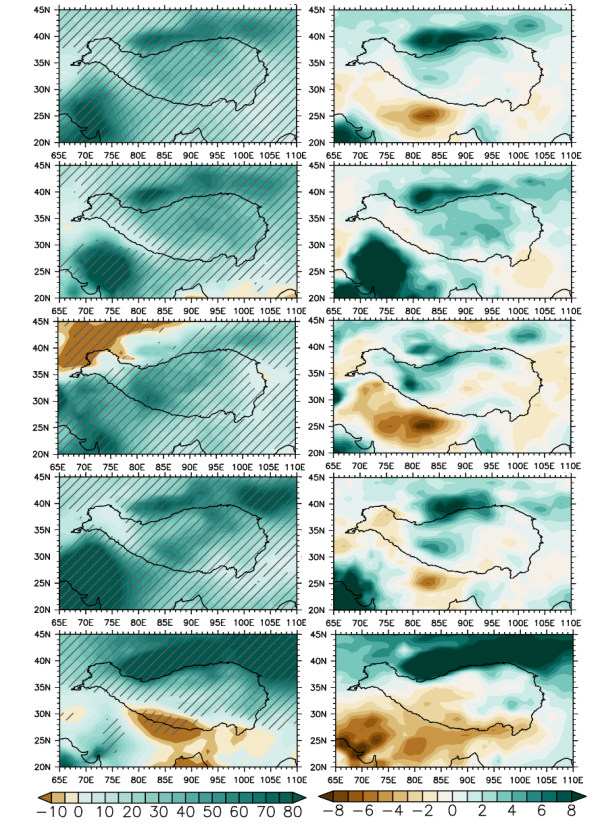Model Weighting Method within Climate Models Projects a Larger Increase in Precipitation Change across the Tibetan Plateau
Date:2022-05-08
Climate researchers have heavily debated and researched projected precipitation changes throughout the Tibetan Plateau (TP) in recent years. Precipitation change in the TP will likely have profound effects on the regional ecosystem and on downstream monsoon weather systems.
A weighting method in climate modeling refers to statistical adjustments to data that are applied to improve output accuracy. Considering independent model simulating skill between CMIP models, collectively, they project a stronger increase in TP precipitation by the end of the century, according to a new paper published in Advances in Atmospheric Sciences. This publication is part of a collaborative research project by scientists from the Institute of Atmospheric Physics at the Chinese Academy of Sciences (IAP, CAS) and Chinese Academy of Meteorological Sciences (CAMS).
Climate projections are mostly based on an ensemble mean, or collective average of CMIP multi-models, in which each member of the ensemble is given equal consideration, or weight toward the mean. However, different levels of model skill and independence may reduce projection reliability simply based on the equal model weighting method.

Long-term precipitation change (2081~2100) projected over the Tibetan Plateau relative to present climatology (1985~2014) under SSP5-8.5, units: %. The left (right) column contains the weighted projections (the difference between weighted and equally weighted projections). From the first to the fifth rows: Annual mean, spring, summer, autumn, and winter precipitation, respectively.
To improve future TP climate projection and to reduce model uncertainty, IAP, CAS and CAMS scientists have recently used a weighting method that gives models different weights according to their skill and level of independence. They applied this method to 27 CMIP6 model ensemble members to see how their weighting method will affect TP precipitation projection.
"Compared to the traditional equally weighted projection, we found a stronger increase in precipitation over the TP in our model weighting projection, especially for the spring season and the northwestern TP region." said Dr. ZHAO Yin, the first author of the paper. "The results provide a useful reference to potential users who will implement climate change adaptation and mitigation studies, focusing on high mountain areas."
Citation: Zhao, Y., T.-J. Zhou, W. X. Zhang, and J. Li., 2022: Change in Precipitation over the Tibetan Plateau Projected by Weighted CMIP6 Models. Adv. Atmos. Sci., https://doi.org/10.1007/s00376-022-1401-2 .
Media contact: Ms. LIN Zheng, jennylin@mail.iap.ac.cn
